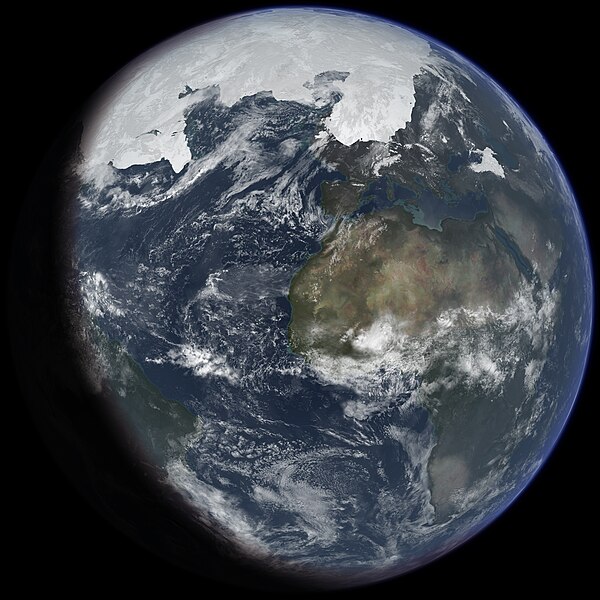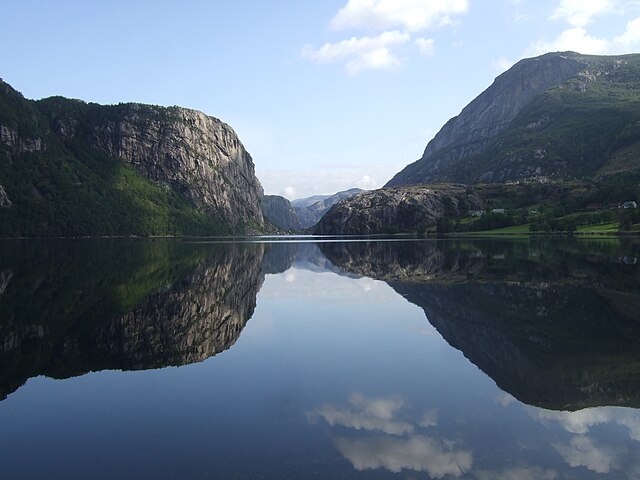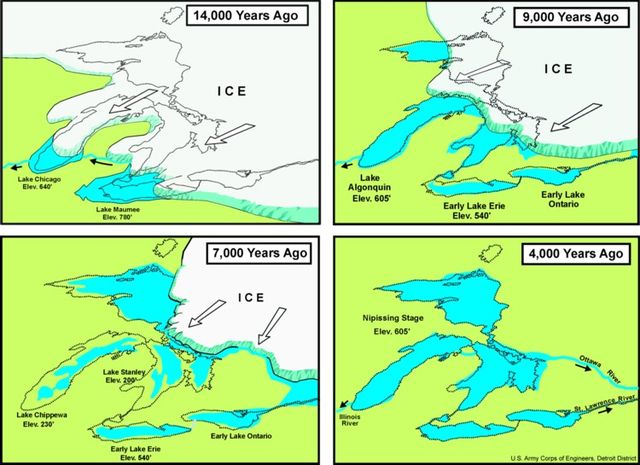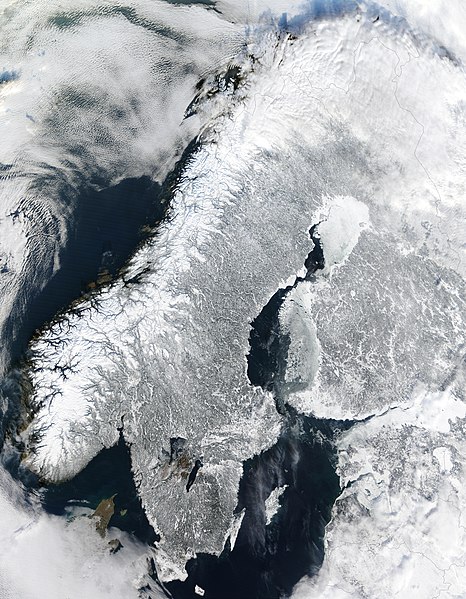The Würm glaciation or Würm stage, usually referred to in the literature as the Würm, was the last glacial period in the Alpine region. It is the youngest of the major glaciations of the region that extended beyond the Alps themselves. Like most of the other ice ages of the Pleistocene epoch, it is named after a river, in this case the Würm in Bavaria, a tributary of the Amper.
Moraines and gravel beds formed in the Würm glaciation near Leutkirch, Westallgäu, Germany, Zeil castle can be seen on the left
An ice age is a long period of reduction in the temperature of Earth's surface and atmosphere, resulting in the presence or expansion of continental and polar ice sheets and alpine glaciers. Earth's climate alternates between ice ages, and greenhouse periods during which there are no glaciers on the planet. Earth is currently in the ice age called Quaternary glaciation. Individual pulses of cold climate within an ice age are termed glacial periods, and intermittent warm periods within an ice age are called interglacials or interstadials.
An artist's impression of ice age Earth at Pleistocene glacial maximum
Haukalivatnet lake (50 meters above sea level) where Jens Esmark in 1823 discovered similarities to moraines near existing glaciers in the high mountains
Stages of proglacial lake development in the region of the current North American Great Lakes
Scandinavia exhibits some of the typical effects of ice age glaciation such as fjords and lakes.





